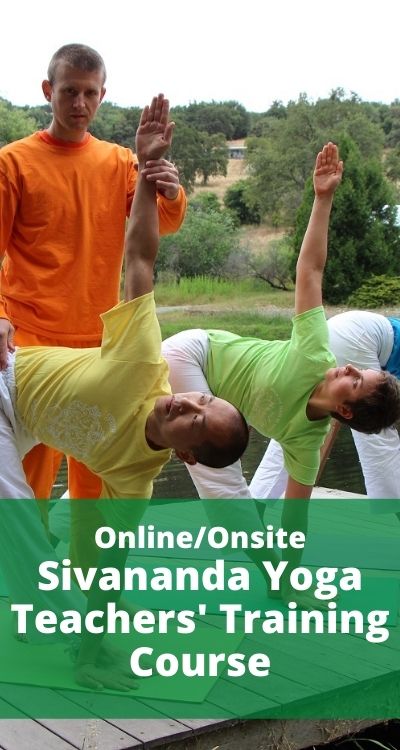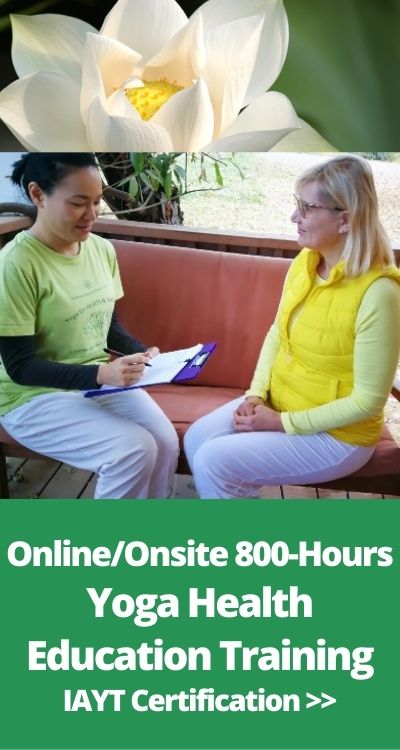What is the best method of meditation, e.g. best timing, duration, breathing, concentration, etc.?
Swami Vishnu-devananda would say that it is not possible to teach someone how to meditate, any more than it is possible to teach them how to sleep. Sleep overtakes us only when we detach our mind from its concerns. Meditation also cannot be forced, but unlike sleep, it is a conscious state. To attain this state of relaxed awareness we need to prepare ourselves, and there are several steps that will help us. It is important to reiterate that meditation is a process, and as such, takes time. Be gentle and patient with your mind; do not expect miracles. The more care and attention you give to the preparation, the more positive the results. Here are some practical tips for meditating:
1. Sitting position: The spine should be straight by propping the tail bone over a pillow so that the spine is supported. Let both knees fall down touching the ground. Your posture needs to be stable to ensure good meditation. Drop and relax your shoulders as we have anunconscious tendency to tense them. Hands should connect; either in chin mudra or clasp the fingers together. Mentally scan the body for any hidden tension. Using autosuggestion, tell the body to relax and the mind to be ready to turn inward.
2. Breath awareness: It is of utmost importance to be aware of your breath. We recommend three phases of the breath for meditation.
- First, take a long deep breath as soon as you sit down. Long inhalation will bring more oxygen to the brain, and a subsequent long exhalation will consciously switch on the para-sympathetic nervous system to induce relaxation.
- Next, start making your breath rhythmical. Inhale to the count of Om one, Om two, Om three, and exhale to the count of Om one, Om two, Om three. This will bring about an optimal rhythm of inhaling for 5-6 seconds and exhaling for 5-6 seconds, which will help synchronize the brain waves and the heart rate. This is an optimum ratio according to brain scientists’ research.
- After the breath becomes regular and rhythmical, allow the breath to calm itself down further. Cease counting and observe the breath become almost imperceptible and graduate into a silent rhythm, as if you were no longer breathing. The breath at that time remains within the nostrils and it reaches the inside top of the nostrils, which according to swara yoga (science of breath), stimulates the ether element. This is the subtle, internal breath which induces a meditative state. This phase through the breath and the concentration of prana thereof, leads the aspirant to the threshold between an outer awareness represented by the outer breath, and an inner awareness represented by the condensed prana that comes from almost holding the breath, yet sustaining relaxed inner breath.
3. The point of focus: Swami Vishnu-devananda recommended that the aspirant not switch the point of focus once (s)he has chosen one, and to not focus on the lower chakras while meditating. You can choose either the point in between your eyebrows (ajna chakra) or the point at the middle of the chest (anahata chakra). When choosing the point of focus, make sure not to force the attention, but simply focus internally and feel the energy gathering at one energy point using your subtle energy awareness.
4. The object of concentration: Beginners in meditation are advised to use “Om” or the universal mantra. If there is already a method of devotion to one’s church or tradition, one will not feel alienated or anxious when focusing on “Om” as it is tradition-neutral. When you are ready, get a consultation about your ishta devata (chosen form of devotion) and get initiated into a mantra by the teacher of the lineage.
It is best to develop an intimate relationship with the form behind your chosen mantra so it can build the power of converting your intimate emotions into powerful devotion. In brief, you need to love your mantra, either in a qualitative or abstract form. The heart needs to be involved in the meditation process. Without the cultivation of this love or connection, the meditation process is dry and will soon become tiresome.
5. Detachment from thoughts, return to object of concentration: The process of meditation is happening simultaneously in two aspects. One side is the cultivation of a one pointed state of mind on a neutral and pure thought such as a mantra. The other aspect is the letting go of all other concerns, memories or attachments, to empty oneself of all thoughts. Detachment from your thoughts has to be based on a firm conviction that meditation is not the time to solve worldly problems and problems are solved automatically when the mind is elevated and tuned to a higher wavelength.
With practice, it will become easier to detach from one’s thoughts, identity, ego and attachments. It is a habit one can learn to step back from oneself and be the neutral witness.
It is preferable to approach meditation with an open mind, without preconceived ideas and without expectations or judgments. Regularity in practice is needed. Do not compare yourself with others as every mind works differently. A teacher or guide is necessary in the beginning.
It is important not to use meditation as an escape from life, i.e. letting the mind wander in an imaginary world. Meditation helps you to become more aware and awake, being able to face life’s challenges with resilience and responsibility. Meditation practice needs to be accompanied by a sattvic (pure, wholesome) yogic lifestyle, i.e. the five points of Yoga: practice of asanas, pranayama, relaxation, pure vegetarian diet, positive thinking and self observances. Calmness in daily life will bring success in meditation. It is better to create a meditative environment or meditation room for oneself, a separate, clean, light, airy, quiet, happy and sacred space where you can carry on your daily practice in the early morning hours upon waking (4 to 6 a.m.) and prior to going to bed (6 to 8 p.m.) Meditate regularly: once or twice daily for 20 to 30 minutes.
According to Swami Sivananda, meditation practice is the royal road to peace of mind. Be patient and do not expect quick results.




